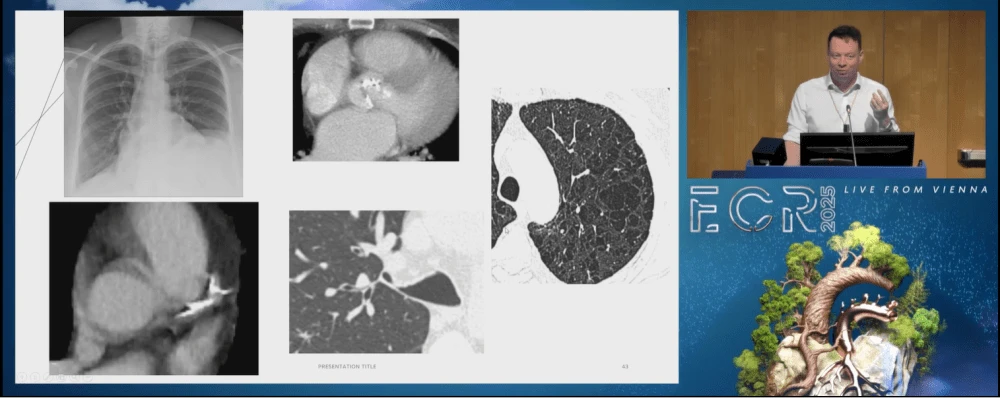At the European Congress of Radiology (ECR), Joe Barnett, a radiologist from St Albans, UK, presented a session focused on improving chest CT reports. He highlighted the critical role of communication in radiology, drawing from his experience managing a radiology department. He noted that a significant portion of complaints in radiology stems from unclear communication. Additionally, his work with Heart Lung Health, the UK's largest lung cancer screening provider, has involved developing structured template reports to enhance the efficiency and safety of radiologists.
Barnett underscored that radiology reports are becoming increasingly important as a primary mode of communication, particularly with the rise of remote reporting and the release of reports directly to patients in the UK. He stated, “Our mistakes are there, written down in black and white, sometimes in binary, for everyone to see. For the rest of time.” This, he argued, emphasises the necessity of clarity, effectiveness and simplicity in reporting.
To illustrate the pitfalls of poor communication, Barnett referenced Humpty Dumpty from Lewis Carroll’s Through the Looking-Glass. He used the character as a metaphor for radiologists who use excessively technical or ambiguous language, assuming the responsibility lies with the reader to understand. He challenged the audience: “If our clinicians or the receivers of our reports do not understand or do not act on our reports, we are partly responsible for that.”
The solution, according to Barnett, is structured template reporting. He explained that a template report follows a standardised format, ensuring uniformity in structure and terminology. This approach not only makes reports clearer but also reduces variability, ensuring that essential findings and recommendations are always included. “A template report is uniform. It never varies. It’s got a consistent, uniform structure and a standardised lexicon,” he said. For example, in lung cancer screening, a template ensures that every report includes whether certain findings are present or absent, eliminating ambiguity.
Barnett supported his argument with evidence from a study comparing template reports with free-text reports. The study assessed clinicians’ ability to recall critical findings immediately after reading reports. It revealed that only 63% of clinicians could recall the critical finding in free-text reports, highlighting the risks of unstructured reporting. He emphasised, “Template reports have a limited number of possible recommendations or outcomes which our radiologists are forced into.”
Concluding his session at ECR, Barnett encouraged radiologists to critically assess their reporting practices and consider adopting structured templates to enhance clarity and improve patient care. His key takeaway was that improving reports is not just about individual style but about ensuring effective communication that leads to better clinical decisions.
Source & Image Credit: ECR 2025










